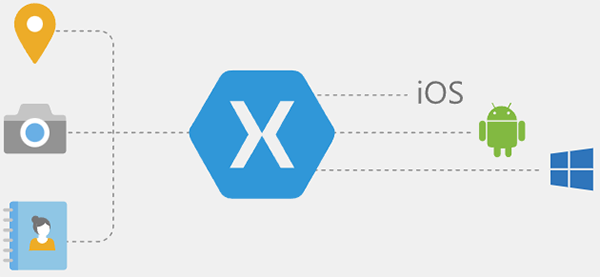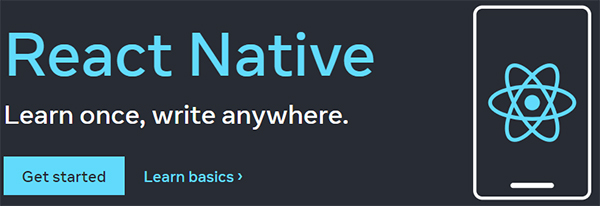Cross Platform App Frameworks

Top Five Cross Platform App Frameworks
Cross platform app frameworks simplify the process of developing apps that work across different devices and operating systems. In many cases, they may also reduce development costs. There’s no shortage of cross-platform app frameworks today but some have more features and are easier to use than others. Let’s look at the top five right now.
1. Cross Platform App Frameworks – Xamarin
Xamarin is an open-source framework created by Microsoft that uses the C# programming language. In addition to Android and iOS apps, it allows for the development of Universal Windows Platform (UWP) apps and macOS apps. It was released in 2013.
Xamarin provides a complete app development ecosystem, full hardware support, and makes the maintenance of the code and app an intuitive process. It’s developer-friendly and integrates well with Visual Studio and XCode from Apple. It supports 64-mode and native tools and offers solid performance.
In terms of drawbacks, Xamarin has a large app size compared to other platforms and less community support. Also, it’s geared towards apps with a more simplified rather than complex user interface.

2. Cross Platform App Frameworks – React Native
One of the most popular cross-platform frameworks around, React Native was launched in 2015 by Facebook, which integrates it into its technology stack. It’s written in JavaScript and allows developers to build iOS, Android, as well as web apps.
React Native is open-source, easy to learn, and benefits from the support of a large community. It provides a high-quality user interface, native features and functionalities, and an overall fast development process thanks to pre-installed code libraries.
In terms of limitations, React Native has some difficulties with complex visual effects and provides a somewhat different navigation from what native users may expect. Also, third-party plugins for the framework may come with certain security vulnerabilities.
3. Cross Platform App Frameworks – Flutter
Flutter is an open-source software development toolkit. While it’s not a full-fledged web framework in the traditional sense of the word, Flutter provides developers with a fast way to build native apps for Android and iOS. It was released in 2017 and requires knowledge of the programming language Dart for building sophisticated apps.
Flutter is a very fast framework that can maximize the productivity of developers without compromising quality. It uses proprietary widgets as user interface components and provides developers with lots of flexibility. It’s hot reload feature makes the code easy to view in real-time.
In terms of limitations, Flutter is not as mature as other platforms on this list and hence not as widely adopted. Also, it doesn’t provide a truly native feel but strikes a kind of compromise between functionality and UI.
4. Cross Platform App Frameworks – Adobe PhoneGap
Adobe PhoneGap, formerly known as Apache Cordova, is another open-source cross-platform app framework that facilitates app development from the same code base. It was released in 2011 and has been enabling developers to create hybrid applications built with web technologies such as JavaScript, CSS, and HTML.
Adobe PhoneGap provides a flexible environment, useful user interface libraries, and an overall intuitive development process. It provides access to Native APIs for all platforms.
The downside to Adobe PhoneGap is that Adobe has discontinued the platform, which doesn’t make it a reliable choice for long term projects. As Apple and Google roll new iOS and Android updates, PhoneGap will become outdated. But developers can migrate existing PhoneGap projects to the open-source Apache Cordova.
5. Cross Platform App Frameworks
Ionic Framework is a user interface toolkit that relies on HTML, JavaScript, and CSS. It enables developers to create cross-platform hybrid mobile and desktop apps. Ionic is open-source. It was initially released in 2013. Apps built in Ionic use the device’s browser to run.
Ionic offers plenty of plugins that simplify development and that enable developers to build the required functionality into their apps. It works across mobile devices and has good community support. It’s also easy to learn.
In terms of limitations, Ionic works on top of frameworks Cordova or PhoneGap to run. Also, since it creates hybrid apps that need a device’s browser, it’s not as fast in terms of performance as frameworks for building native apps. It’s not ideal for visually heavy apps such as games.
Cross Platform App Frameworks – The Bottom Line
Cross-platform app frameworks have a lot to offer, but it’s important to consider their strengths as well as limitations before choosing one. If you haven’t developed a cross-platform app before, consulting with a team of app experts can help you maximize your budget while keeping costs in check.
Additional Cross Platform Resources
- React Native – Create native apps for Android and iOS using React.
- Microsoft Visual Studio Xamarin – Deliver native Android, iOS, and Windows apps with a single shared .NET code base.
- Flutter – Build apps for any screen.
- Ionic – Free and open source, Ionic offers a library of mobile-optimized UI components, gestures, and tools for building fast, highly interactive apps.
- Cordova – Target multiple platforms with one code base, free and open source.
